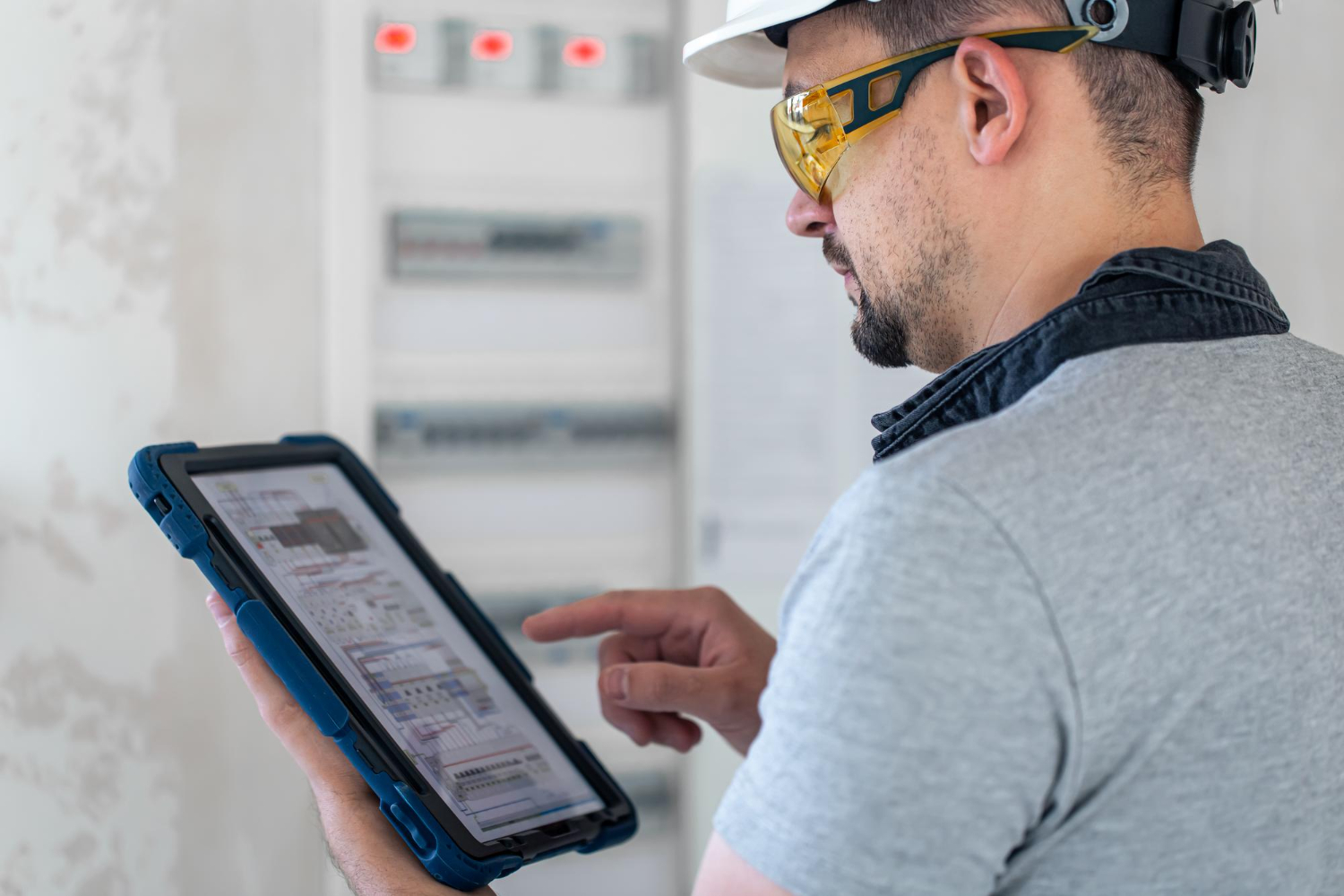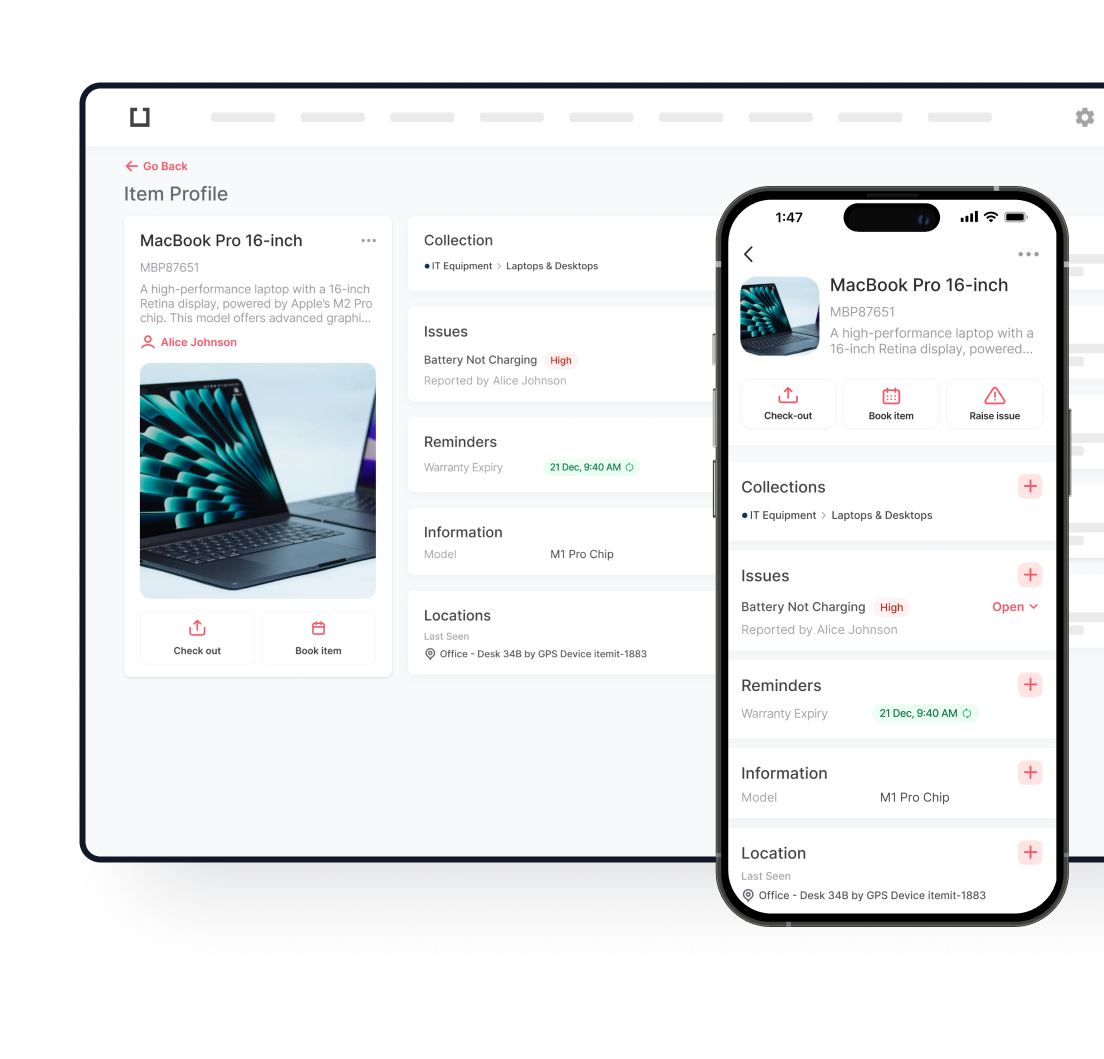
Growing a construction company requires more than just skilled labor and reliable equipment. Construction business development demands strategic planning, operational efficiency, and adaptability to changing market conditions. Success comes from building solid relationships, managing resources effectively, and staying ahead of industry shifts that can make or break your competitive edge.
Key Takeaways
- Strategic planning forms the backbone of any successful construction business, requiring clear goals, market analysis, and financial projections
- Construction equipment tracking eliminates costly losses, improves utilization rates, and provides real-time visibility into asset locations across multiple job sites
- Client relationships and reputation management drive repeat business and referrals, which account for the majority of new contracts in the construction sector
- Technology adoption separates growing companies from stagnant ones, with digital tools streamlining operations from bidding to project closeout
- Financial discipline and cash flow management prevent the common pitfall of having profitable projects on paper while struggling to meet payroll
- Workforce development and retention reduce costly turnover and build a skilled team that enhances your company’s capabilities
Building a Foundation: Your Construction Business Plan
A robust building construction business plan serves as your roadmap to growth. This living document outlines your company’s direction, financial projections, and competitive positioning. Start by defining your niche. Will you focus on residential remodels, commercial projects, or infrastructure work? Specialization often trumps being a generalist, especially when you’re establishing credibility.
Your plan should include detailed market research. Who are your competitors? What gaps exist in your local market? Construction industry trends indicate a growing demand for sustainable building practices and the integration of smart building technology. Companies that position themselves to meet these demands gain an advantage.
Financial projections need to be realistic, not optimistic. Include your startup costs, operating expenses, expected revenue, and cash flow forecasts. Construction projects often have delayed payments, so planning for cash flow gaps prevents the crisis that sinks many otherwise successful contractors.
Don’t overlook the operational details. Your building construction business plan should address practical matters like material sourcing and equipment decisions. Many growing contractors discover that poor construction asset management becomes a hidden drain on profitability as they scale.
Mastering Construction Business Management
Effective construction business management separates thriving companies from those barely surviving. You need systems for everything: estimating, scheduling, procurement, and quality control. Relying on memory or scattered spreadsheets creates chaos as your business grows.
Project management software has become standard. These platforms centralize communication, track progress, and flag potential issues before they become expensive problems. Your team requires real-time access to drawings, specifications, and schedules, particularly when collaborating across multiple sites.
Financial management deserves special attention. Many construction companies fail despite having plenty of work because they manage cash flow poorly. Invoice promptly. Track receivables aggressively. Know your costs down to the smallest detail. A project might look profitable on your bid, but change orders, delays, and untracked expenses can quickly erode margins.
Risk management protects your growing business. This means proper insurance coverage, safety protocols, and contract review. One major accident or lawsuit can devastate years of careful growth. Safety programs reduce incidents while demonstrating professionalism to clients and insurance providers.
Quality control systems ensure consistent delivery. Create checklists for common tasks. Conduct regular inspections. Address problems immediately rather than hoping they’ll resolve themselves. Your reputation hinges on the quality of every project, and properly managing the types of construction equipment prevents breakdowns that could derail timelines.
Equipment Management: The Hidden Growth Lever
Equipment represents a massive investment for construction companies. Poor equipment management results in financial losses due to theft, loss, underutilization, and unnecessary rentals. Construction equipment tracking provides visibility and control that directly impacts your bottom line—often more than contractors realize.
Traditional methods—clipboards, spreadsheets, or simple memory—fail as you scale. Equipment moves between job sites. Tools get borrowed and never returned. Maintenance schedules get ignored until something breaks at the worst possible moment. These problems multiply with company growth.
Modern equipment management systems change this chaos into organized efficiency. QR codes or barcodes attached to equipment enable instant tracking through mobile devices. Scan a tool when it leaves the warehouse. Scan again when it arrives on site. The system automatically updates location records and assignment status.
The benefits extend beyond knowing where things are. You can track maintenance schedules, ensuring equipment receives preventive care before failures occur. This extends equipment life and reduces costly emergency repairs. Usage data reveals which equipment sits idle and which gets overused, informing smarter purchase and rental decisions.
Materials and consumables also require careful oversight. Running out of crucial supplies delays projects and frustrates crews. Overstocking ties up capital and creates storage headaches. Real-time inventory visibility helps maintain the right balance.
Consider the variety you manage: excavators, loaders, generators, compressors, hand tools, safety equipment, and specialized machinery. Each category requires different management approaches. Heavy equipment requires GPS tracking for theft prevention and to provide precise location data. Smaller tools benefit from check-in/check-out systems that create accountability.

Client Acquisition and Relationship Building
Growing a construction business begins with securing the right clients. Not all projects serve your growth goals equally. A large, complex project with a notoriously difficult client might seem attractive but it could drain resources and damage your reputation.
Your network drives growth more than advertising ever will. Architects, engineers, developers, and property managers control project pipelines. Build genuine relationships with these influencers. Attend industry events. Join professional associations. Provide value without expecting immediate returns.
Past clients represent your best growth opportunity. They already trust you. They know your capabilities. The cost of winning repeat business is a fraction of acquiring new clients. Stay in touch after project completion. Follow up on the performance of spaces. Offer maintenance services or handle smaller repairs promptly.
Digital presence matters more than many contractors realize. Your website should showcase completed projects with high-quality photos and client testimonials. Keep it updated. An outdated website signals a company that might be outdated in other ways too.
Bidding strategy affects growth. Winning every bid you submit indicates that your prices are too low. A healthy win rate sits between 20-40% for most commercial work. This indicates competitive pricing while maintaining adequate margins. Track your bid-to-win ratio and adjust accordingly.
Leveraging Technology for Competitive Advantage
Companies that resist digital change fall behind competitors who embrace it. This doesn’t require a massive investment in every new tool that appears. Start with technologies that solve your most significant pain points.
Estimating software improves accuracy and speed. You can generate detailed quantity takeoffs from digital plans, reducing errors and omissions. Historical cost data helps refine estimates based on actual performance rather than guesswork.
Mobile technology empowers field teams. Foremen can access plans, submit daily reports, capture photos, and track time from their smartphones. This eliminates the lag time between field events and office awareness. Problems get addressed faster. Changes get documented immediately.
Drones provide aerial site surveys and progress monitoring. The cost has dropped substantially while capabilities have expanded. Regular drone surveys document site conditions, track earthwork quantities, and provide powerful marketing content.
Building Information Modeling (BIM) has moved from cutting-edge to standard practice on many projects. Familiarity with BIM workflows and coordination processes is essential for competing on larger commercial and institutional projects.
Cloud-based platforms enable collaboration across your entire project team. Subcontractors, consultants, owners, and your internal team can access current information anytime, anywhere. This reduces miscommunication and keeps everyone working from the latest plans and specifications. Digital construction inventory tracking ensures materials arrive when needed without tying up excess capital.
Financial Strategies That Support Growth
Growing too quickly kills construction companies as often as growing too slowly. Expansion requires capital for equipment, materials, larger payrolls, and bonding capacity. Knowing your financial position and growth constraints prevents overextension.
Bonding capacity often limits how much work you can take on. Surety companies evaluate your financial strength, experience, and track record before issuing bonds. Building strong relationships with sureties and maintaining clean financials expands your bonding capacity over time.
Credit lines provide flexibility for timing mismatches between expenses and receivables. Establishing credit before you desperately need it gives you negotiating power and better terms. Banks prefer lending to companies that don’t urgently need money.
Profit margins vary significantly across project types and delivery methods. Track profitability by project category. Certain work types consistently underperform while others exceed expectations. This data should inform your bidding strategy and guide your construction business development focus.
Working capital management separates successful contractors from struggling ones. You need enough capital to cover expenses between progress payments. Projects with long payment cycles or retainage requirements tie up capital for extended periods. Factor these considerations into which projects you pursue.
Workforce Development: Your Most Valuable Asset
Skilled workers remain scarce across most construction markets. Your ability to attract, train, and retain talented people directly impacts your growth potential. Companies known as great places to work have their pick of the best available talent.
Competitive compensation matters, but not everything. Workers also value job security, advancement opportunities, respectful treatment, and safe working conditions. Creating a positive culture costs little but yields enormous returns in productivity and retention.
Training programs develop skills while demonstrating your commitment to employee growth. This can include formal apprenticeships, mentorship pairings, or sending key people to industry training. Cross-training creates flexibility and reduces vulnerability to key person dependencies.
Safety culture reflects company values. Companies that prioritize safety consistently outperform those that treat it as a checkbox exercise. Fewer accidents mean lower insurance costs, better productivity, and enhanced reputation. Clients increasingly evaluate contractor safety records before awarding work.
Clear career paths help retain ambitious employees. People tend to stay with companies where they see opportunities for advancement. Document potential career progressions. Discuss growth opportunities during regular performance reviews. Promote from within whenever possible.
Adapting to Market Changes
Sustainable building practices have moved from niche to mainstream. Prefabrication and modular construction challenge traditional approaches. Labor shortages drive automation and productivity improvements. Companies that anticipate and adapt to these shifts gain advantages over reactive competitors.
Green building certifications like LEED have become expected on many project types. Knowing sustainable construction methods and materials positions your company for projects requiring these capabilities. The initial learning curve pays dividends as green building becomes standard rather than specialty work.
Offsite construction—fabricating components in controlled factory settings—improves quality, reduces waste, and shortens schedules. This approach suits certain project types better than others. Recognizing where prefabrication makes sense adds another tool to your capabilities.
Labor productivity improvements become necessary as skilled workers grow scarce. This might mean better planning to reduce wasted motion, using equipment instead of manual labor where practical, or implementing lean construction principles. Minor improvements across many processes compound into significant competitive advantages.
Material costs and availability fluctuate based on global supply chains and economic conditions. Building relationships with multiple suppliers reduces vulnerability to shortages. Knowing material lead times and building them into schedules prevents costly delays. Managing the diverse types of construction equipment efficiently becomes even more critical during market volatility.

Measuring Success and Adjusting Course
You can’t improve what you don’t measure. Key performance indicators (KPIs) provide objective feedback on how your construction business management strategies are working. Choose metrics that matter to your specific goals rather than tracking everything possible.
Project profitability should be measured and analyzed after completion. Compare actual costs against estimates. Identify categories where you consistently over- or underestimate. This feedback loop improves future bidding accuracy.
Schedule performance—finishing projects on time—affects your reputation and profitability. Track planned versus actual completion dates. Analyze delays to identify patterns. Some delays result from factors outside your control, but many stem from predictable issues that better planning can prevent.
Safety metrics include incident rates, near-misses, and safety training hours. Leading indicators, such as safety observations and corrective actions, predict future performance more effectively than lagging indicators, like injury rates.
Client satisfaction drives repeat business and referrals. Conduct brief surveys after project completion. Address concerns promptly. Track Net Promoter Scores or similar metrics over time.
Employee satisfaction correlates with productivity and retention. Anonymous surveys reveal issues you might not hear otherwise. Exit interviews with departing employees provide valuable feedback, though it comes too late to retain that particular person.
Financial metrics beyond profitability include cash flow, days in receivables, debt ratios, and working capital. These numbers reveal financial health and highlight problems before they become critical. Tools like itemit provide data-driven insights for equipment and inventory management that support better operational decisions.
Moving Forward With Purpose
Construction business development requires patience, strategic thinking, and consistent execution. Quick fixes don’t exist. Success comes from making wise decisions repeatedly over time. The strategies outlined here provide a framework, but you’ll need to adapt them to your specific market, capabilities, and goals.

Try itemit
Choose a better way to track
your assets.
Start your free 14-day trial now!
Frequently Asked Questions
What should a building construction business plan include?
Your plan needs market analysis, competitive positioning, financial projections, and operational procedures. Include specifics about your target market, services, pricing strategy, and resource requirements. Make it a living document reviewed quarterly.
How can construction equipment tracking improve profitability?
Equipment tracking eliminates losses and duplicate rentals, while also improving utilization. Most contractors lose thousands annually on misplaced tools and unnecessary rentals. A tracking system provides real-time visibility and accountability, with ROI typically appearing within months.
How can I enhance construction business management as my company expands?
Transition from informal systems to documented processes. Implement project management software, standardize estimating, create quality checklists, and establish clear communication protocols. Delegate operational tasks while maintaining oversight of financial performance and client relationships.
How does construction inventory tracking prevent project delays?
Real-time inventory visibility prevents material shortages and overstocking. Track usage rates, set reorder points, and receive low-stock alerts. This eliminates costly emergency orders and improves job costing accuracy.
What's the best way to grow a construction business with limited capital?
Focus on profitability over volume. Choose projects based on margins, build relationships for repeat business, rent equipment initially, and use progress payments to fund work. Partner with other contractors on larger projects to gain experience without bearing all financial risk.
What's the most important factor in construction business development?
Relationships drive growth more than any other factor. Your network of architects, engineers, developers, and past clients creates a steady pipeline. Building trust takes time but pays dividends for years through repeat business and referrals.

Keep Learning
itemit Blog
Tips, guides, industry best practices, and news.
What is RFP in Construction? Process Steps and Best Practices
Learn about the RFP process in construction, key steps involved, and best practices to create successful bids that ensure smooth project execution and efficiency.
Types of Construction Equipment and Their Effective Management
Explore different types of construction equipment and learn how proper management improves efficiency, safety, and project performance across construction sites.
The Ultimate Guide to Construction Inventory Tracking
Discover how construction inventory tracking improves accuracy, cuts costs, saves time, and streamlines projects in our ultimate guide for builders and managers.



